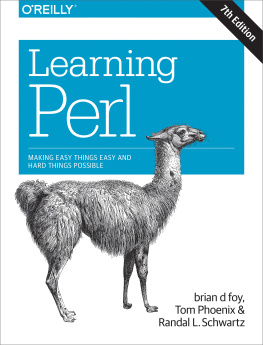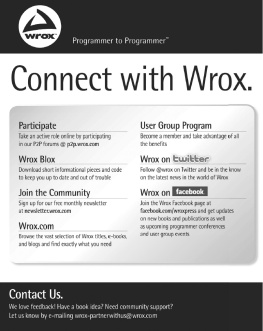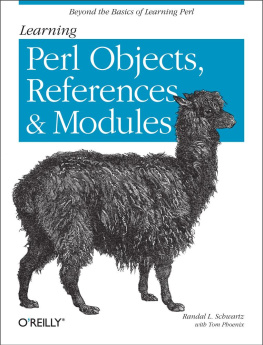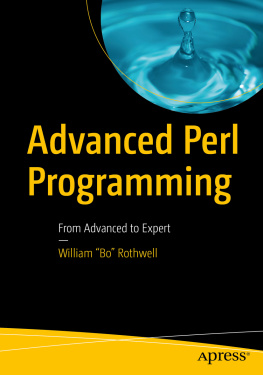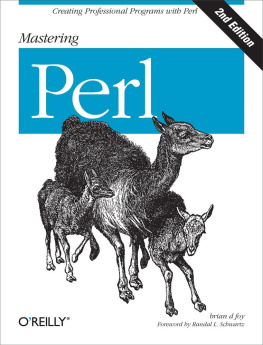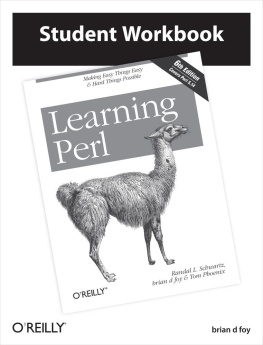Randal L. Schwartz - Intermediate Perl
Here you can read online Randal L. Schwartz - Intermediate Perl full text of the book (entire story) in english for free. Download pdf and epub, get meaning, cover and reviews about this ebook. year: 2012, publisher: OReilly Media, genre: Computer. Description of the work, (preface) as well as reviews are available. Best literature library LitArk.com created for fans of good reading and offers a wide selection of genres:
Romance novel
Science fiction
Adventure
Detective
Science
History
Home and family
Prose
Art
Politics
Computer
Non-fiction
Religion
Business
Children
Humor
Choose a favorite category and find really read worthwhile books. Enjoy immersion in the world of imagination, feel the emotions of the characters or learn something new for yourself, make an fascinating discovery.
- Book:Intermediate Perl
- Author:
- Publisher:OReilly Media
- Genre:
- Year:2012
- Rating:4 / 5
- Favourites:Add to favourites
- Your mark:
Intermediate Perl: summary, description and annotation
We offer to read an annotation, description, summary or preface (depends on what the author of the book "Intermediate Perl" wrote himself). If you haven't found the necessary information about the book — write in the comments, we will try to find it.
This book picks up right where Learning Perl leaves off. With Intermediate Perl, youll graduate from short scripts to much larger programs, using features that make Perl a general-purpose language. This gentle but thorough guide introduces you to modules, complex data structures, and object-oriented programming.
Each chapter is small enough to be read in just an hour or two, ending with exercises to help you practice what youve learned. If youre familiar with the material in Learning Perl and have the ambition to go further, Intermediate Perl will teach you most of the core Perl language concepts you need for writing robust programs on any platform.
Topics include:
- Packages and namespaces
- References and scoping, including regular expression references
- Manipulating complex data structures
- Object-oriented programming
- Writing and using modules
- Testing Perl code
- Contributing to CPAN
Just like Learning Perl, material in this book closely follows the popular introductory Perl course the authors have taught since 1991. This second edition covers recent changes to the language up to version 5.14.
Randal L. Schwartz: author's other books
Who wrote Intermediate Perl? Find out the surname, the name of the author of the book and a list of all author's works by series.


